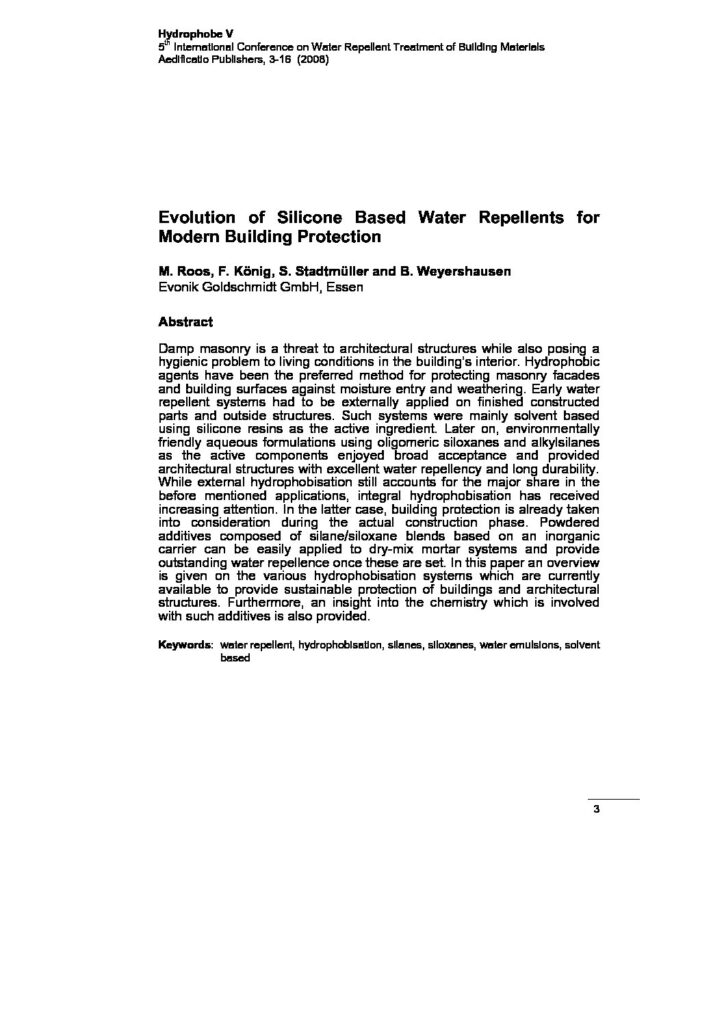Abstract
Damp masonry is a threat to architectural structures while also posing a
hygienic problem to living conditions in the building’s interior. ydrophobic
agents have been the preferred method for protecting masonry facades and building surfaces against moisture entry and weathering. Early water repellent systems had to be externally applied on finished constructed parts and outside structures. Such systems were mainly solvent based using silicone resins as the active ingredient. Later on, environmentally friendly aqueous formulations using oligomeric siloxanes and alkylsilanes as the active components enjoyed broad acceptance and provided architectural structures with excellent water repellency and long durability. While external hydrophobisation still accounts for the major share in the before mentioned applications, integral hydrophobisation has received increasing attention. In the latter case, building protection is already taken into consideration during the actual construction phase. Powdered additives composed of silane/siloxane blends based on an inorganic carrier can be easily applied to dry-mix mortar systems and provide outstanding water repellence once these are set. In this paper an overview is given on the various hydrophobisation systems which are currently available to provide sustainable protection of buildings and architectural structures. Furthermore, an insight into the chemistry which is involved with such additives is also provided.
Keywords: water repellent, hydrophobisation, silanes, siloxanes, water emulsions, solvent based
Evolution of Silicone Based Water Repellents for Modern Building Protection

